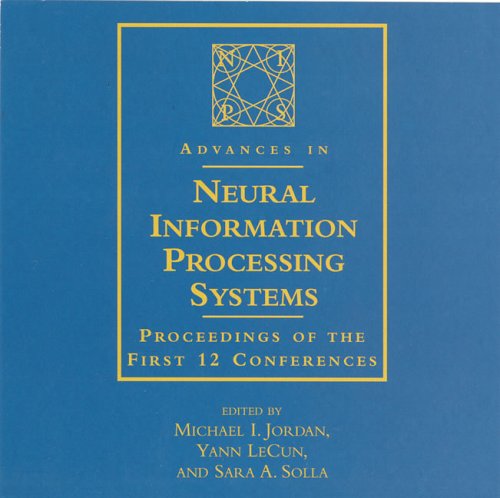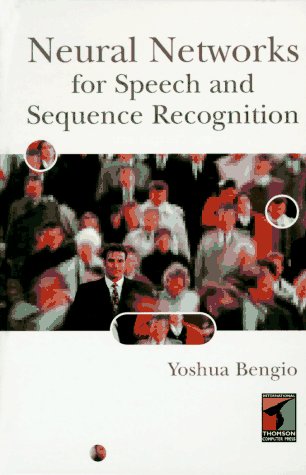Which is the best deep learning goodfellow ian?
Finding your suitable deep learning goodfellow ian is not easy. You may need consider between hundred or thousand products from many store. In this article, we make a short list of the best deep learning goodfellow ian including detail information and customer reviews. Let’s find out which is your favorite one.
Best deep learning goodfellow ian
1. Hands-On Machine Learning with Scikit-Learn and TensorFlow: Concepts, Tools, and Techniques to Build Intelligent Systems
Feature
O Reilly MediaDescription
Graphics in this book are printed in black and white.
Through a series of recent breakthroughs, deep learning has boosted the entire field of machine learning. Now, even programmers who know close to nothing about this technology can use simple, efficient tools to implement programs capable of learning from data. This practical book shows you how.
By using concrete examples, minimal theory, and two production-ready Python frameworksscikit-learn and TensorFlowauthor Aurlien Gron helps you gain an intuitive understanding of the concepts and tools for building intelligent systems. Youll learn a range of techniques, starting with simple linear regression and progressing to deep neural networks. With exercises in each chapter to help you apply what youve learned, all you need is programming experience to get started.
- Explore the machine learning landscape, particularly neural nets
- Use scikit-learn to track an example machine-learning project end-to-end
- Explore several training models, including support vector machines, decision trees, random forests, and ensemble methods
- Use the TensorFlow library to build and train neural nets
- Dive into neural net architectures, including convolutional nets, recurrent nets, and deep reinforcement learning
- Learn techniques for training and scaling deep neural nets
- Apply practical code examples without acquiring excessive machine learning theory or algorithm details
2. Deep Learning (Adaptive Computation and Machine Learning)
Feature
deep learning adaptive computation and machine learning seriesdeep learning adaptive computation and machine learning
Description
An introduction to a broad range of topics in deep learning, covering mathematical and conceptual background, deep learning techniques used in industry, and research perspectives.
Written by three experts in the field, Deep Learning is the only comprehensive book on the subject.
Elon Musk, cochair of OpenAI; cofounder and CEO of Tesla and SpaceX
Deep learning is a form of machine learning that enables computers to learn from experience and understand the world in terms of a hierarchy of concepts. Because the computer gathers knowledge from experience, there is no need for a human computer operator to formally specify all the knowledge that the computer needs. The hierarchy of concepts allows the computer to learn complicated concepts by building them out of simpler ones; a graph of these hierarchies would be many layers deep. This book introduces a broad range of topics in deep learning.
The text offers mathematical and conceptual background, covering relevant concepts in linear algebra, probability theory and information theory, numerical computation, and machine learning. It describes deep learning techniques used by practitioners in industry, including deep feedforward networks, regularization, optimization algorithms, convolutional networks, sequence modeling, and practical methodology; and it surveys such applications as natural language processing, speech recognition, computer vision, online recommendation systems, bioinformatics, and videogames. Finally, the book offers research perspectives, covering such theoretical topics as linear factor models, autoencoders, representation learning, structured probabilistic models, Monte Carlo methods, the partition function, approximate inference, and deep generative models.
Deep Learning can be used by undergraduate or graduate students planning careers in either industry or research, and by software engineers who want to begin using deep learning in their products or platforms. A website offers supplementary material for both readers and instructors.
3. Neural Networks and Deep Learning: A Textbook
Description
This book covers both classical and modern models in deep learning. The primary focus is on the theory and algorithms of deep learning. The theory and algorithms of neural networks are particularly important for understanding important concepts, so that one can understand the important design concepts of neural architectures in different applications. Why do neural networks work? When do they work better than off-the-shelf machine-learning models? When is depth useful? Why is training neural networks so hard? What are the pitfalls? The book is also rich in discussing different applications in order to give the practitioner a flavor of how neural architectures are designed for different types of problems. Applications associated with many different areas like recommender systems, machine translation, image captioning, image classification, reinforcement-learning based gaming, and text analytics are covered.The chapters of this book span three categories:
The basics of neural networks: Many traditional machine learning models can be understood as special cases of neural networks. An emphasis is placed in the first two chapters on understanding the relationship between traditional machine learning and neural networks. Support vector machines, linear/logistic regression, singular value decomposition, matrix factorization, and recommender systems are shown to be special cases of neural networks. These methods are studied together with recent feature engineering methods like word2vec.
Fundamentals of neural networks: A detailed discussion of training and regularization is provided in Chapters 3 and 4. Chapters 5 and 6 present radial-basis function (RBF) networks and restricted Boltzmann machines.
Advanced topics in neural networks: Chapters 7 and 8 discuss recurrent neural networks and convolutional neural networks. Several advanced topics like deep reinforcement learning, neural Turing machines, Kohonen self-organizing maps, and generative adversarial networks are introduced in Chapters 9 and 10.
The book is written for graduate students, researchers, and practitioners. Numerous exercises are available along with a solution manual to aid in classroom teaching. Where possible, an application-centric view is highlighted in order to provide an understanding of the practical uses of each class of techniques.
4. Deep Learning: A Practitioner's Approach
Feature
O Reilly MediaDescription
Although interest in machine learning has reached a high point, lofty expectations often scuttle projects before they get very far. How can machine learningespecially deep neural networksmake a real difference in your organization? This hands-on guide not only provides the most practical information available on the subject, but also helps you get started building efficient deep learning networks.
Authors Adam Gibson and Josh Patterson provide theory on deep learning before introducing their open-source Deeplearning4j (DL4J) library for developing production-class workflows. Through real-world examples, youll learn methods and strategies for training deep network architectures and running deep learning workflows on Spark and Hadoop with DL4J.
- Dive into machine learning concepts in general, as well as deep learning in particular
- Understand how deep networks evolved from neural network fundamentals
- Explore the major deep network architectures, including Convolutional and Recurrent
- Learn how to map specific deep networks to the right problem
- Walk through the fundamentals of tuning general neural networks and specific deep network architectures
- Use vectorization techniques for different data types with DataVec, DL4Js workflow tool
- Learn how to use DL4J natively on Spark and Hadoop
5. Advances in Neural Information Processing Systems: Proceedings of the First 12 Conferences (The MIT Press)
Description
The complete twelve-volume proceedings of the Neural Information Processing Systems conferences from 1988 to 1999 on CD-ROM.
The annual conference on Neural Information Processing Systems (NIPS) is the flagship conference on neural computation. The conference is interdisciplinary, with contributions in algorithms, learning theory, cognitive science, neuroscience, vision, speech and signal processing, reinforcement learning and control, implementations, and diverse applications. Only about 30 percent of the papers submitted are accepted for presentation at NIPS, so the quality is exceptionally high. This CD-ROM contains the entire proceedings of the twelve Neural Information Processing Systems conferences from 1988 to 1999. The files are available in the DjVu image format developed by Yann LeCun and his group at AT&T Labs. The CD-ROM includes free browsers for all major platforms.
6. Deep Learning for Medical Image Analysis
Feature
Academic PressDescription
Deep learning is providing exciting solutions for medical image analysis problems and is seen as a key method for future applications. This book gives a clear understanding of the principles and methods of neural network and deep learning concepts, showing how the algorithms that integrate deep learning as a core component have been applied to medical image detection, segmentation and registration, and computer-aided analysis, using a wide variety of application areas.
Deep Learning for Medical Image Analysis is a great learning resource for academic and industry researchers in medical imaging analysis, and for graduate students taking courses on machine learning and deep learning for computer vision and medical image computing and analysis.
- Covers common research problems in medical image analysis and their challenges
- Describes deep learning methods and the theories behind approaches for medical image analysis
- Teaches how algorithms are applied to a broad range of application areas, includingChest X-ray, breast CAD, lung and chest, microscopy and pathology, etc.
- Includes a Forewordwritten byNicholas Ayache
7. Neural Networks for Speech and Sequence Recognition
Feature
Used Book in Good ConditionDescription
Sequence recognition is a crucial element in many applications in the fields of speech analysis and recognition, time-series prediction, control and signal monitoring. This book applies the techniques of neural networks and hidden Markov models to problems of pattern and speech recognition, using real-world examples throughout.Highlights include the incorporation of domain knowledge with learning from examples, the description of contemporary advances such as recurrent neural networks, hybrids with hidden Markov models, and a thorough but straightforward use of mathematics. Neural Networks for Speech and Sequence Recognition will prove valuable to researchers and graduate students alike.
8. Introduction to Python Programming: Beginner to Advanced, Practical Guide, Tips and Tricks, Easy and Comprehensive
Description
[Paperback is black&white]Python is an easy-to-use and easy-to learn programming language that is freely available on Windows, Macintosh, and Linux computers. In this book, youll learn Python by working through 15 chapters. 1. Introduction2. Installation and Getting Started3. Python IDEs and Debuggers4. Python Basics5. Data Types and Dynamic Typing6. Control Constructs7. Functions8. Modules, Import-Statements and Packages9. Advanced Functions and Namespaces10. File Input/Output11. Assertion and Exception Handling12. Commonly-Used Python Standard Library Modules13. Object-Oriented Programming (OOP) in Python14. Unit Testing15. Database ProgrammingThis book is designed for- Students who want to learn programming and computational thinking with no programming experience- Junior developers who know one or two languages- Returning professionals who havent written code in years- Seasoned professionals looking for a fast, simple, crash course in Python 39. Unsupervised Learning: Foundations of Neural Computation (Computational Neuroscience)
Description
Since its founding in 1989 by Terrence Sejnowski, Neural Computation has become the leading journal in the field. Foundations of Neural Computation collects, by topic, the most significant papers that have appeared in the journal over the past nine years. This volume of Foundations of Neural Computation, on unsupervised learning algorithms, focuses on neural network learning algorithms that do not require an explicit teacher. The goal of unsupervised learning is to extract an efficient internal representation of the statistical structure implicit in the inputs. These algorithms provide insights into the development of the cerebral cortex and implicit learning in humans. They are also of interest to engineers working in areas such as computer vision and speech recognition who seek efficient representations of raw input data.












Recent Comments